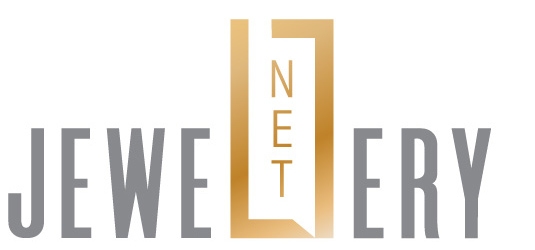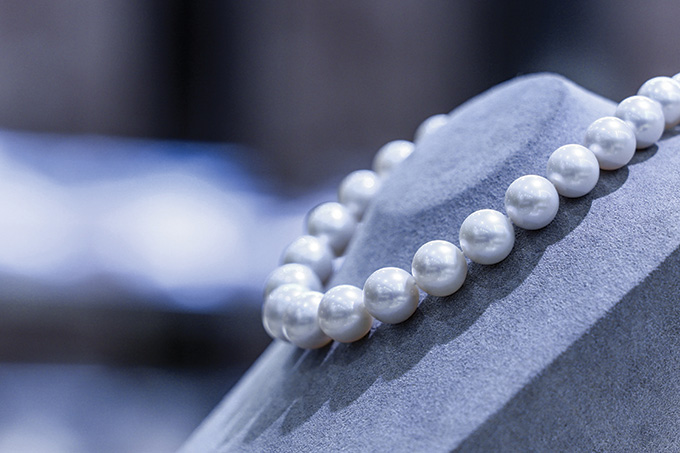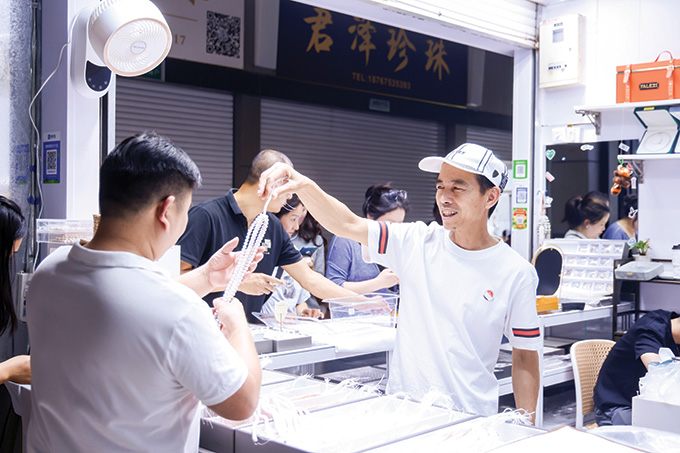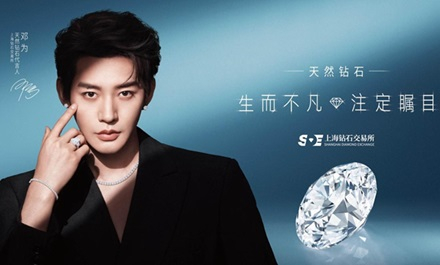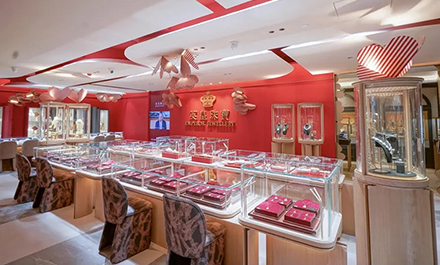Innovations in pearl cultivation combined with digital sales strategies and international expansion are paving the path for China’s freshwater pearl industry.
This article first appeared in the JNA July/August 2025 issue.
China’s pearl industry experienced a slowdown in 2024, following an extraordinary boom in 2023. Industry players attributed this downturn to global economic headwinds and cautious consumption sentiment, which they also described as a “natural cycle.” The market has since steadily recovered through the first half of 2025.
Technological advancements in freshwater pearl cultivation and overseas expansion along with rising demand for higher-quality pearls could further support growth in China’s pearl industry, according to stakeholders.
Lustrous freshwater pearls
Known as the “Pearl Capital of China,” Zhuji in Zhejiang Province produced 600 tonnes of freshwater pearls in 2024, accounting for 70 per cent of total production worldwide. In 2024, annual sales of pearls in Zhuji exceeded RMB50 billion (around US$6.98 billion), government data showed.
Zhuji’s pearl sector encompasses freshwater pearl cultivation, processing, manufacturing, wholesale, research and development, and retail sales.
He Bin, vice chairman of the Professional Association of Pearls, Zhejiang, revealed that Chinese freshwater pearls are increasingly becoming more competitive due to improvements in quality while maintaining their affordability. For instance, the quality of rice pearls offered by his company is on a par with that of coveted Akoya pearls in terms of whiteness and lustre, He noted. The rice pearls, however, are more economical.
As such, Chinese freshwater pearls are steadily gaining traction in the US and European markets, not only because of price and appearance but also due to their diverse range of colours.
“Japanese Akoya pearls have the highest price and value in the US market now. However, Chinese freshwater pearls are winning the game in terms of sales volume,” said Jeremy Shepherd, president of the Cultured Pearl Association of America (CPAA) and president and CEO of Pearl Paradise.
Shepherd spoke at the “Global Pearl Industry Development Outlook” panel discussion at the 2025 Shanxiahu World Pearl Congress in May.
He added that US consumers prefer non-beaded pearls, which are mostly produced in China.
David Troth, founder of UK-based jeweller David Harry Jewels, remarked that the European market is embracing the wide range of natural freshwater pearl colours, particularly pastels such as lavender and peach.
Growth prospects
Industry stakeholders participating in the 2025 Shanxiahu World Pearl Congress highlighted the importance of boosting Chinese freshwater pearls’ visibility around the world. Hence, expanding to overseas markets is a key growth strategy.
While the US and European markets are showing strong interest in Chinese freshwater pearls, He of the Professional Association of Pearls, Zhejiang noted that India, Indonesia and other Southeast Asian markets likewise present tremendous potential.
According to Troth, capitalising on the freshwater pearls’ compelling narrative is crucial to bolstering the pearls’ global reach. Telling authentic stories about the pearls’ origin, unique characteristics and China’s pearl culture, among others, could strongly resonate with global consumers who are seeking more meaningful purchases.
Pearl industry veteran Pierre Fallourd agreed, adding, “I visited China three times in the last six months and noticed China’s evolving pearl industry, with several innovations such as automatic pearl sorting and drilling machines, and sustainable farming techniques. These, and the stories behind pearl production, deserve to be told and valued. These narratives will drive growth in the freshwater pearl sector.”
China’s government also ramped up support for cross-border e-commerce businesses. For instance, Shanxiahu expanded its overseas sales channels by partnering with major online platforms like Amazon, TikTok, AliExpress and Wish, as well as accelerating the construction of overseas warehouses that support efficient logistics and faster delivery of products to global customers.
Meanwhile, Shepherd of CPAA said the US tariffs situation could be a bit stressful for pearl companies, but this scenario will not be permanent.
“High tariffs have to come down eventually,” said Shepherd. “Most people are adopting a wait-and-see attitude, waiting for some clarification on the tariffs policy. Meanwhile, the jewellery industry must be more open and flexible when faced with changing market dynamics.”
Higher-quality pearls
According to Ruby Liu, president of Guild Gem Laboratories, the Chinese market is seeing increased consumer demand for higher-quality saltwater and freshwater pearls in recent years.
This is mainly driven by the growing middle-class segment as well as rising awareness and knowledge of pearls in the market. “These consumers are increasingly taking into consideration the quality of the pearls that they purchase,” explained Liu.
There are also mounting requests for certification of loose pearls and pearl jewellery from both Chinese companies and individual buyers. Data from Guild Gem Laboratories likewise showed a notable uptick in the share of white freshwater pearls bearing the so-called “Aurora” grade in the mid- to high-end pearl jewellery market. This indicates a growing desire for higher-quality pearls, she added.
According to Guild Gem Laboratories’ pearl-grading standard, the term “Aurora” refers to the highest-quality freshwater pearl in white colour.
Liu, meanwhile, pointed out a certain stereotype regarding freshwater pearls, which are often perceived as being inferior in quality compared to other cultured pearls. This stemmed from the fact that top-range freshwater pearls are often sold with average or even “very poor-quality pearls,” which does not help freshwater pearls’ reputation.
“A pearl-grading standard enables consumers to have a clearer understanding of the quality of pearls and assists upstream merchants to better classify the pearls and accurately reflect their true value,” said Liu.
